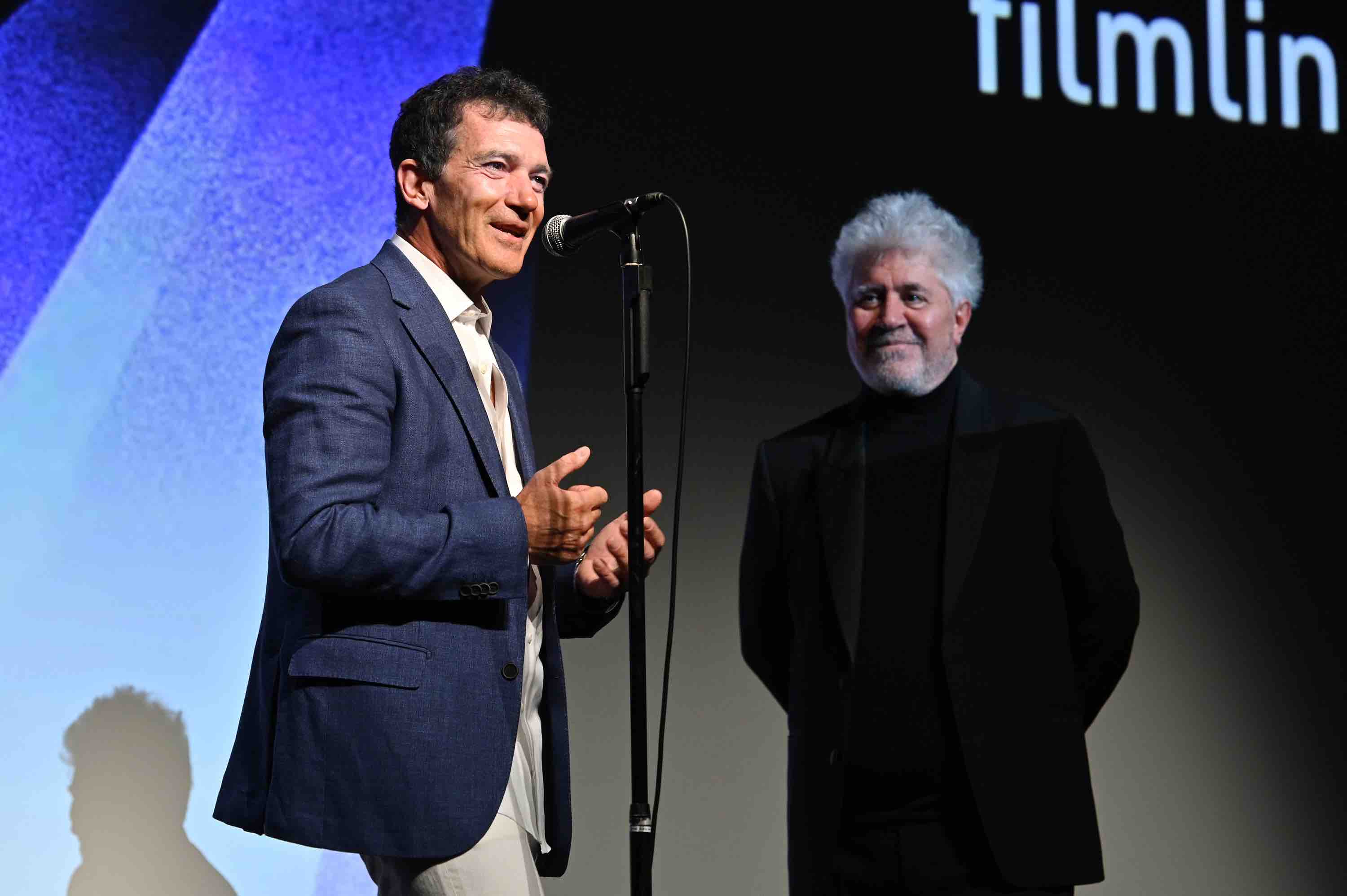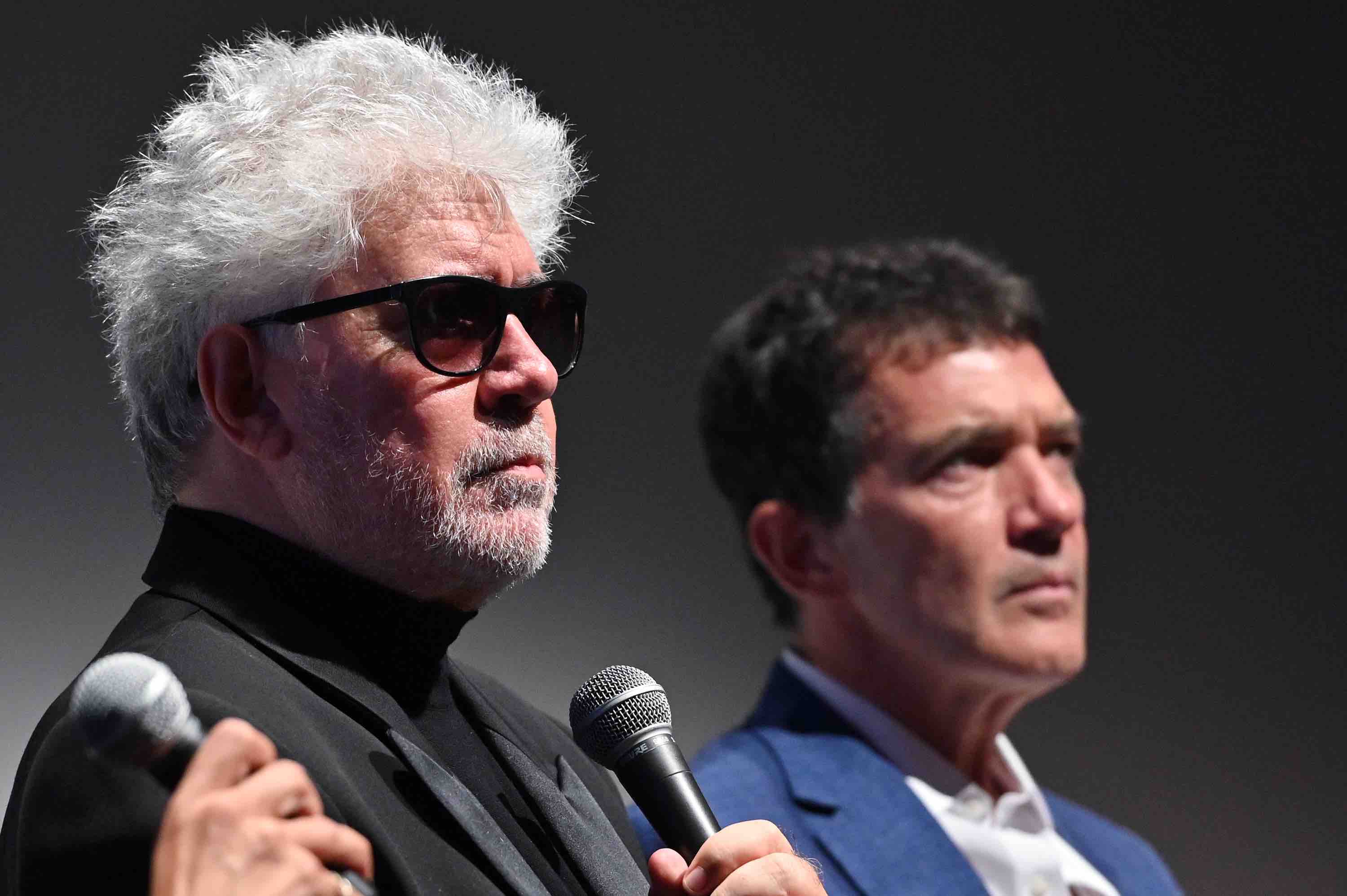The Spanish master of cinema Pedro Almodóvar is once again gracing New York Film Festival screens with a new movie, Dolor y gloria, after much-lauded appearances at Cannes, Telluride and Toronto International Film Festival. The movie finds the director at what seems to be his most candid and emotionally raw work. Antonio Banderas – in a role many have claimed to be a career-best performance – plays a loosely adapted version of the director, a man in near-constant pain who’s barely staving off his inner demons as he reminisces about his life and career. His present-day loneliness is suffocating, the heartbreak of past romances still ache inside him almost as much as his blinding migraines and shortness of breath. His depression only deepens the many pains he feels, and he can find only a fleeting solace through revisiting his childhood in a drug-induced haze.
In true Almodóvar style, his character is going through hell but the world around him is colorful and bright, meticulously color coordinated in vivid primary and jewel tones. These are deeper shades that some of the more jovial color schemes we’ve seen before. They’re more in line with Volver and his last somber movie, Julieta. There is palpable energy bouncing between the director Salvador’s past and present as he never stays in either realm for too long. There is not only comfort for him in his past, but potentially a renewed source of inspiration, one that might break the director’s creative dry spell. Banderas is simply marvelous in the movie playing a sometimes self-destructive figure with more emotions in his eyes than he lets others around him know. The same could be said of Penelope Cruz, another longtime Almodóvar collaborator who plays Salvador’s mother in his tumultuous flashbacks.

At the New York Film Festival press conference for the film, Almodóvar slyly set the record straight on the discussions around Dolor y gloria‘s autobiographical nature. “I think my entire biography has been told in the 21 films I’ve done before this one,” he said. “I’m reflected in a really oblique way because I’m standing behind characters that are women or not film directors. This is the first time I took my reflection and look at myself. Every search that I made for the script, I made inside me. In any case, I am reflected in a more intimate way in this movie more than any other one.”
“For me, it’s not important that the spectator thinks that this is about me or that this is my portrait or not. Because in the process of writing, at the beginning, I was thinking about writing about myself,” he added. “I was always present. There is a moment when you are in 20 pages of the script, everything you are writing is mixed with fiction. There is a moment beyond that when you are three-quarters of the way through the script, that fiction is who rules the narration and reality disappears. In that moment, I need to feel believable in a cinematic way, even if it doesn’t represent reality.”
“I never fell in love with a painter or builder as a kid, but I could.”
Part of the reason the film cannot be described as autobiographical is that many of the moments in the film come from others in Almodóvar’s orbit. “When I say the movie is very familiar to me, it’s also because I made my [film] with the memories of everyone around me,” he said. “In the movie, sometimes I stole memories from my assistants, my brother or some friends or from the period I was living. Everything is familiar to me, but that doesn’t mean I lived in the movie. Actually, there are many things that I never experienced. I mean, when I was a kid, I never lived in a cave, but I know the feeling of that guy because we move up, we migrate – I know what it means to leave your hometown and move to another place in a precarious way. I never fell in love with a painter or builder as a kid, but I could. At that time, I knew about my sexuality. I never had a heroin experience, but during the ’80s, I was surrounded by many close friends who were into that, so I know I have enough information about that.”

The line between autobiography and fiction is far from clean in the movie, and many scenes are altered or expanded upon for better tension or to deeper explore Salvador’s emotions. “Some other things are completely part of my life. For example, the scene when we’re preparing the mother for death and the experience of ending an affair when passion was alive and well were – but I haven’t had the experience of that love returning 32 years later – but that is the nice thing about fiction, you can write it and then experience it through the actors.”
“Pedro is a very private person and I’ve never tried to trespass those boundaries.”
Even Banderas, who Almodóvar first encouraged to appear in movies when the budding actor was 19, was caught by surprise at some of the scenarios in the script. “We have been friends for almost 40 years now and we’ve done eight movies together, but our friendship has certain boundaries,” Banderas said. “Pedro is a very private person and I’ve never tried to trespass those boundaries. I’ve always been respectful of his private life. So it was a surprise for me when I read the script and there were some confessions there and aspects of his personality that I didn’t know. I didn’t know that he wanted to close certain circles in his life that were open, certain wounds with the mother, actors, with cinema, with life itself and with an ex-boyfriend. It became clear to me that there are certain areas [in the script that] are real and there are certain areas that are fictional.”
Flashbacks to Salvador’s memories feature heavily in the movie. For Almodóvar, it was a seamless process to move between the present and the past. “The structure is always a result of the script, and it is not always there from the very first draft,” Almodóvar said. “It’s once I repeat the various draft does the structure come, once I decide which stories to tell and how I want to tell it. In the case of Dolor y gloria, I don’t want to sound tacky but it came from the idea of flowing water. I started writing this sequence where he’s underwater, where because of gravity, he’s in the best situation of the day, there’s no muscle tension. This was something I would do in the summertime before I started writing. I asked someone to take a picture of me in that situation. On one hand, you just live your life but very close to that, you think like a filmmaker. Immediately, after having that pleasure, I thought this is a good shot to start a movie on.”

From that opening scene, Almodóvar explained that the writing began to reflect his past. “I started writing why he’s like that, why he has a big scar on his back,” he said. “The water drives me to another water, which is the river where my mother and the neighbors are washing in the river. When I discovered that I could alternate between my childhood and my adult life, it gave me the key that allowed me to continue writing. I didn’t want to make a movie about someone who was complaining about the pain he is suffering. Nor did I want to write about Antonio’s character’s solitude and isolation. So when that very natural connection to my childhood came up, I realized that that would be the most natural way to tell this story.”
“It’s really important to me that these memories have actually come back to save him,” Almodóvar said. “His addiction isn’t to heroin. It’s to making films. The biggest pain he’s feeling is actually a sensation that he has that he’s never going to be able to shoot again.”
Dolor y Gloria (Pain and Glory) screened at the New York Film Festival and is currently in theaters.







